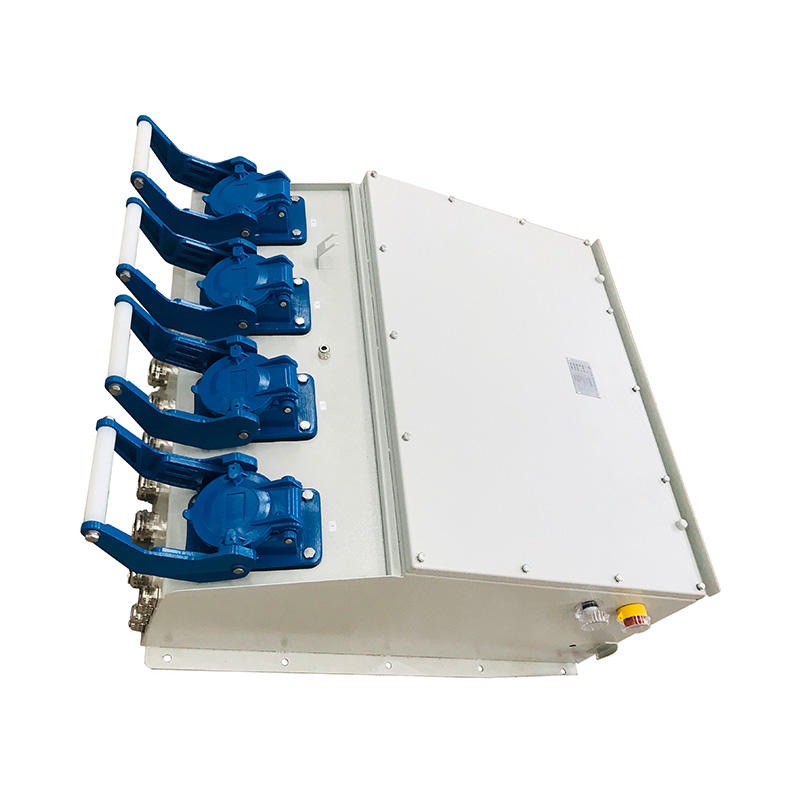1. Characteristics and selection of stainless steel materials
Stainless steel is an alloy material, the main components of which include iron, chromium and a small amount of other alloying elements (such as nickel, molybdenum, etc.), and has strong corrosion resistance and wear resistance. In particular, marine-grade stainless steel, such as 316 stainless steel, far exceeds other ordinary stainless steels in corrosion resistance. 316 stainless steel is an alloy containing 16%-18% chromium and 10%-14% nickel, with 2%-3% molybdenum added. These components can play an excellent role in corrosion resistance in the marine environment, especially in terms of resistance to salt spray, chloride corrosion, and seawater corrosion.
The reason for choosing 316 stainless steel as the main material for Custom Marine Shore Power Socket Boxes is that it can effectively resist salt water corrosion. Salt water in the marine environment and salt in the air are the main factors causing metal corrosion. 316 stainless steel, due to its molybdenum content, can form a stable passivation film, effectively isolating corrosive substances from the outside world, thereby greatly extending the service life of the equipment.
2. Corrosion resistance of 316 stainless steel
Corrosion sources in marine environments usually include salt water, moisture, chlorides, sea breeze, etc. 316 stainless steel has significant corrosion resistance advantages in these environments, especially in the following aspects:
Salt spray corrosion resistance: 316 stainless steel can effectively resist the erosion of salt spray and salt water, ensuring that the equipment is not easy to rust in environments with high salt concentrations such as coastlines or ports. This material can withstand long-term exposure to high salinity environments, avoiding the loss of function or beauty of equipment due to surface corrosion.
Chloride corrosion resistance: Chloride is the most common corrosion source in seawater, and the molybdenum element in 316 stainless steel has good tolerance to chloride. Even in an environment containing chloride, 316 stainless steel can still maintain its surface stability and avoid local corrosion (such as pitting or crack corrosion).
High humidity corrosion resistance: In an environment with sufficient moisture, other metal materials are easily affected by moisture and rust, while the moisture resistance of 316 stainless steel enables it to maintain structural integrity for a long time in a humid climate or when in direct contact with water.
Oxidation resistance: Stainless steel, due to its high content of chromium, can form an extremely thin protective film of chromium oxide, which protects the metal itself from oxygen and moisture in the air and forms an effective self-repair mechanism. This property is particularly important in humid or acidic environments.
3. Mechanical properties of 316 stainless steel
In addition to its excellent corrosion resistance, 316 stainless steel also has good mechanical properties, making it less susceptible to damage when subjected to external forces and physical shocks in the marine environment.
Strength and toughness: 316 stainless steel has high tensile strength and yield strength, and the housing of the equipment can maintain its integrity and functionality even in strong winds, high waves or collisions. This is especially important for Marine Shore Power Socket Boxes, as these devices usually need to withstand greater external pressures such as collisions, vibrations, etc.
High temperature resistance: 316 stainless steel can also maintain good performance at high temperatures and is not easy to deform or crack. In the marine environment, especially in tropical areas, the temperature difference varies greatly. The frequent alternation of sun exposure and nighttime cooling may cause the material to expand and contract thermally. The thermal stability of 316 stainless steel ensures that the equipment does not lose its original strength and stability at high temperatures.
4. Long-term durability of 316 stainless steel
The use of high-quality stainless steel materials is not only corrosion-resistant, but also long-term durability. Custom Marine Shore Power Socket Boxes use 316 stainless steel, which can effectively reduce the frequency of equipment maintenance and replacement costs. Traditional metal materials are prone to corrosion, oxidation, and damage in the marine environment, and may require regular maintenance, replacement or coating. The corrosion resistance of 316 stainless steel greatly reduces these problems, ensuring that the equipment can operate stably for a long time without frequent maintenance.
5. Both beautiful and durable
In addition to its functional advantages, 316 stainless steel also has a good appearance texture. The surface of 316 stainless steel, which has been precisely processed, is usually smooth and flat, which can not only resist corrosion, but also maintain its gloss and is not easy to leave stains or watermarks. This is especially important for equipment such as Custom Marine Shore Power Socket Boxes that need to be exposed to the outside world for a long time, because the beautiful appearance can maintain a neat and professional appearance while maintaining high performance, enhancing the market value of the product.
6. Recyclability and environmental protection
Stainless steel is a recyclable and environmentally friendly material, which is one of the reasons why it has become the preferred material in modern equipment. After the end of its life cycle, 316 stainless steel can be recycled to reduce the burden on the environment. This is of great significance to the modern concept of sustainable development, especially today when environmental regulations are becoming more and more stringent, and the use of stainless steel materials meets the needs of green design.







 русский
русский

















